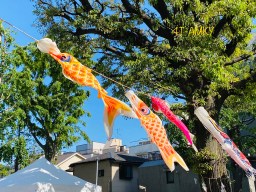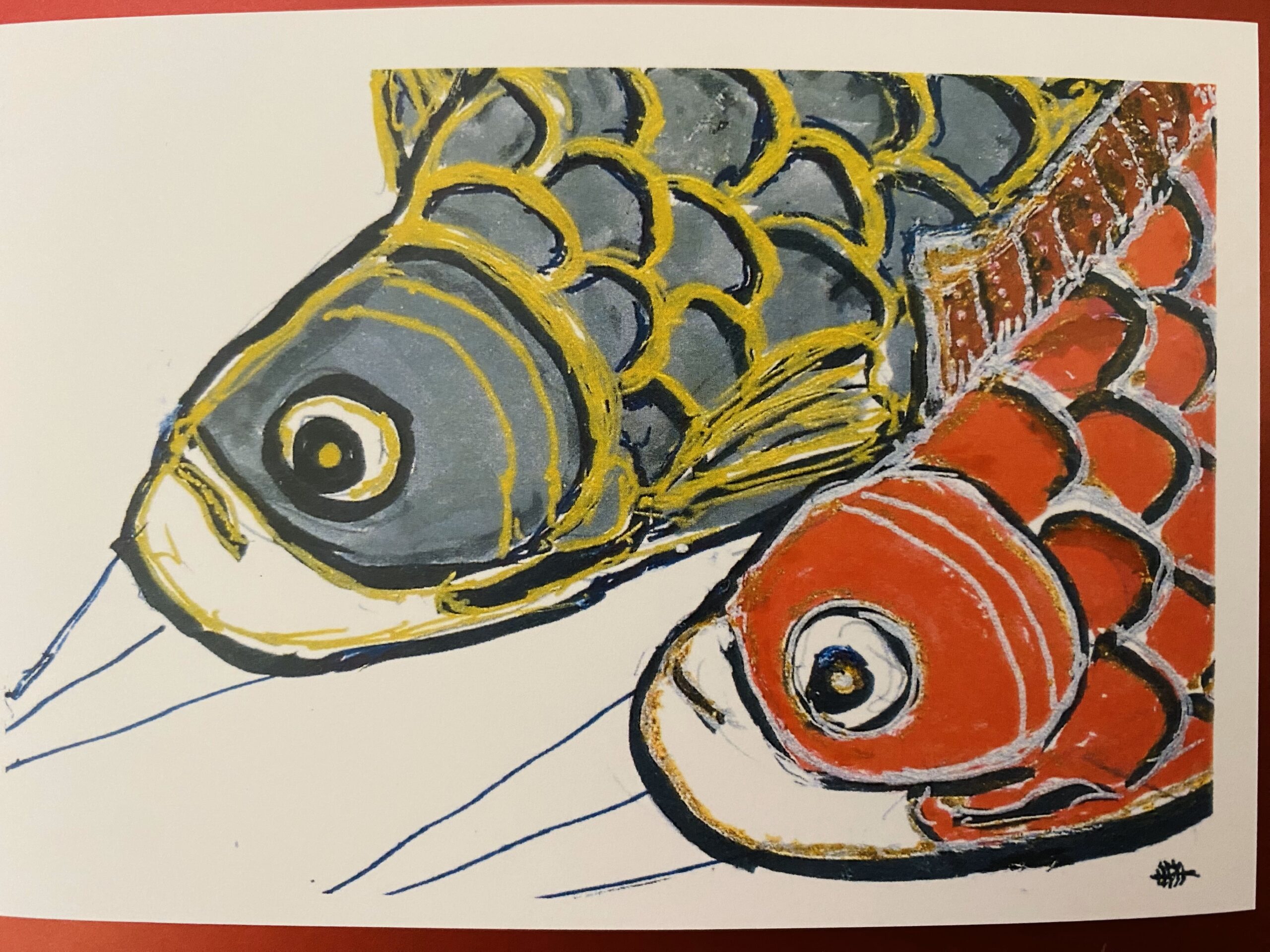「鯉のぼりの由来」
Have you heard of Japanese carp streamers? They are often displayed outside houses on Children’s Day, which is celebrated on May 5th. At 4T-AMKY, Teachers and Students write about Japanese culture, food, history, many spots to visit, and other stuff. Enjoy reading and knowing about deeper Japanese culture!
The History and Origin of Koinobori (Carp streamers).
What are carp streamers?
May 5th is Children’s Day. Families with boys hang up carp streamers to celebrate their children’s growth and wish for their children’s success in life. Carp streamers symbolize success in life.
An illustrated Postcard I received on May 5th.
I received an illustrated postcard from my Kampo (Japanese traditional) medicine teacher. The above illustration was drawn by him and the legend of “The origin of the carp streamers” was written by him.
The origin of carp streamers.
Carp streamers originated in the Edo period (1603-1868), when the shoguns celebrated the birth of a boy. A flagpole called hatasashimono was raised with their family crest on it which were worn by soldiers for identification during battles.



This became a popular tradition among samurai families. Eventually carp streamers were hung from a flagpole, replacing the family crests as time went on.
The origin of the carp streamers comes from the Chinese legend of “Toryumon.” According to this story, when a carp swims through the mighty rapids and the swift current of the upper Yellow River (Huang He), it can transform itself into a dragon. The Toryumon legend symbolizes that anybody who can persevere through great trials in life can accomplish their highest goals and succeed.
Carp streamers today
Even today in 2023 in Japan, on Children’s Day, you can still see carp streamers displayed in front of houses, although fewer than in days past.


Aki Sawaguchi.
Editor: Stuart Cauley
鯉のぼりとは?
5月5日は子供の日です。男の子のいる家庭では、鯉のぼりを飾って子供の成長を祝い、子供の出世を願います。鯉のぼりは立身出世を象徴しています。
節分の日に届いた絵葉書
上の写真は、私の漢方の先生から頂いた絵葉書です。先生が描かれた絵と鯉のぼりの起源が書かれていました。
鯉のぼりの由来
鯉のぼりは江戸時代、将軍家に男の子が生まれると、家紋の旗指物(はたさしもの)を上げて祝ったことが始まりです。それが武家にはやっていったのですが、それが鯉のぼりになったのは、「登龍門」の故事によります。黄河上流にある厳しい流れの難所を泳ぎ切った鯉は龍になれると言う話です。人が、人生の試練を乗り越えて立身出世することを象徴しています
今に伝わる伝統
2023年の現代も、子供の日には、昔より数は減りましたが、家の前に鯉のぼりが飾られるのを見ることができます。






